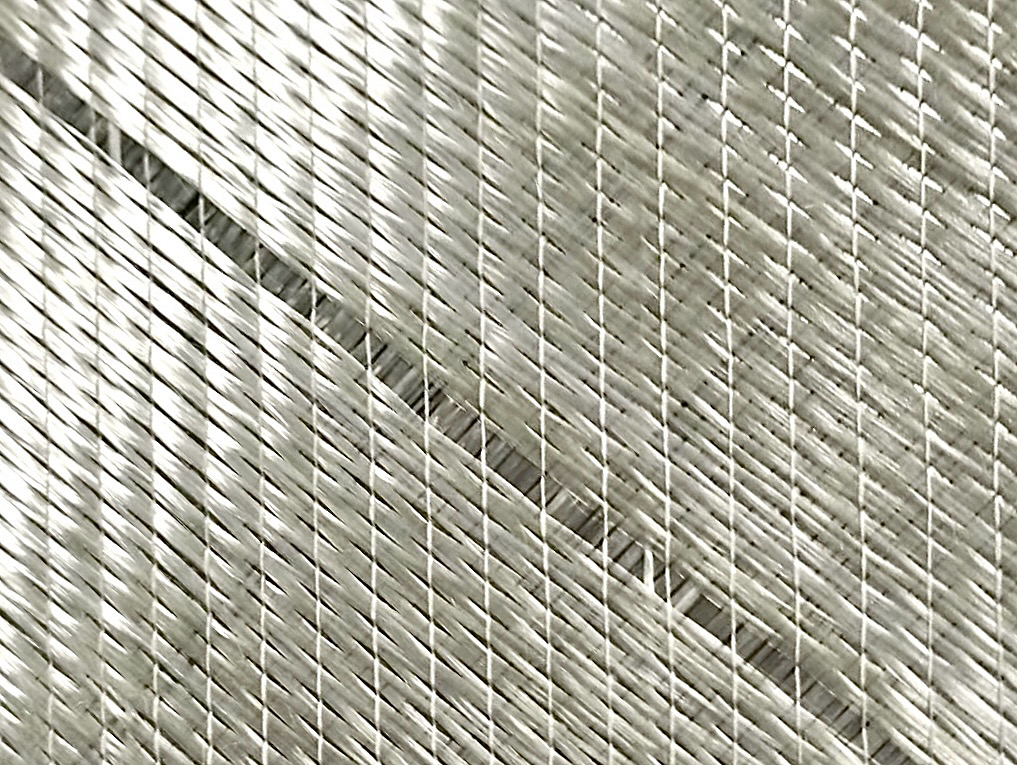
Multiaxial fabrics are engineered by laying fibers in multiple orientations and are crucial in industries where high strength-to-weight ratios are necessary. Gaps are the unwanted and irregular openings between these rovings and E-Glass fiber filaments when fiber layers are laid on the weft section of the multiaxial warp knitting lines. These gaps, which can lead to resin-rich areas in the laminates, can compromise the quality and structural integrity of the composite materials.
Here are some common reasons for gaps in the fabric during the production on multiaxial fabric lines:
Uneven Tension: Some fibers may become loose and create gaps if the tension is inconsistent across all rovings.
Fiber Spreading: Due to the consistency of the roving quality, some rovings might spread differently than the rest during the laying process, leading to gaps or overlaps.

Guide Misalignment: If the guides, such as the reeds in the weft laying heads, which direct the fibers into place, are misaligned, it can cause gaps or bunching.
Equipment Wear: Worn or damaged metal parts contacting the running rovings during fiber lay-up can either damage the rovings or create extra tension, which leads to inconsistent fabric formation.

Splicing Errors: Poor splicing during the joining of roving ends can create weak spots or gaps.
Fuzz on Machine Parts: The build-up of broken filaments (fuzz) on machine parts can damage the rovings and increase the tension. In both cases, laid-up roving layer consistency decreases.

Incorrect Setup: Improper machine setup or incorrect parameters, such as stitching parameters, can lead to gaps.
Static Electricity: Static can cause fibers to repel each other or to stick in the wrong places.
Humidity and Temperature: Extreme conditions can affect fiber behavior and material handling.
Preventive Measures and Solutions
Regular Maintenance: Ensure all equipment is well-maintained and functioning correctly.
Quality Control: Implement stringent quality control measures to detect and correct issues early.
Operator Training: Ensure operators are well-trained and understand the intricacies of the fabric laying process.
Environmental Controls: Maintain a controlled environment to minimize the impact of humidity and temperature.
Material Inspection: Regularly inspect raw materials for consistency and quality.
In addition to the above preventive measures, innovative technology can monitor one of the most gap-causing equipment wear situations: damaged conveyor (hook) pins.
Conveyor (hook) pins on both sides of the transport chain are one of the most critical components of a multiaxial warp knitting machine. The rovings are looped around the pins with tension to stabilize the laid rovings on the weft section of the line.
If a pin is missing or broken, the fiber becomes loose, and/or the fabric has gaps. In addition, pin breaks may occur, leading to loss of time and spare part costs if not detected. Rarely, it is even possible that broken pins may jump into the weft layers and go through stitching, either damaging the knitting elements or surprising the end customer who opens up the roll at the site. Thus, it is of critical importance to detect broken pins on the spot.

BTU-TECH «Conveyor Pin Sensor» is a highly sophisticated device that can detect a single or any number of consecutive pin breaks, independent of the conveyor speed or acceleration/deceleration ramps and the pin spacing.
A touch panel allows the user to set pin spacing and how many broken pins are needed before stopping the production.
The sensor also detects the yarns which are wrapped around the pins.
The sensor is installed as two units for each multiaxial machine on the left and right sides of the machines.

The technology applies to other conveyor systems and their similar pins or needlesprone to damage.
Pay a visit to the “BTU-TECH Sensors” webpage for product info and brochure.
